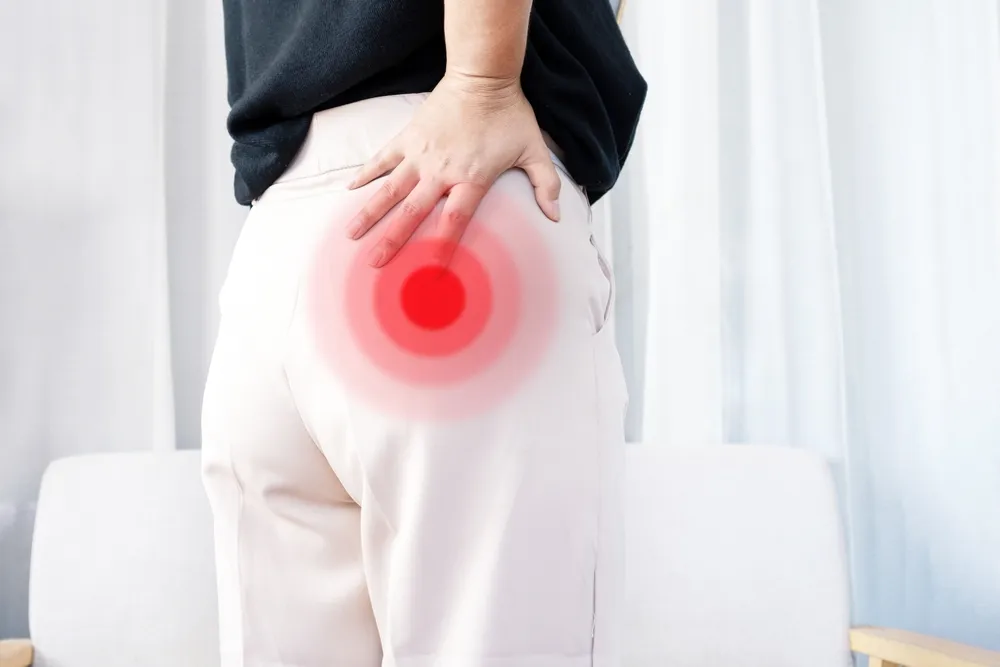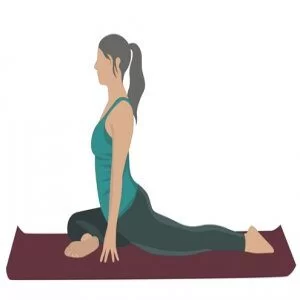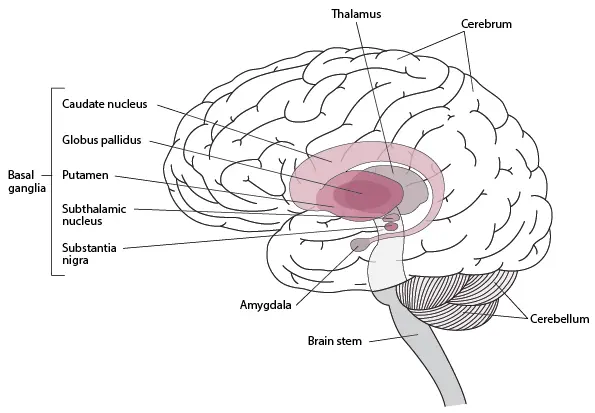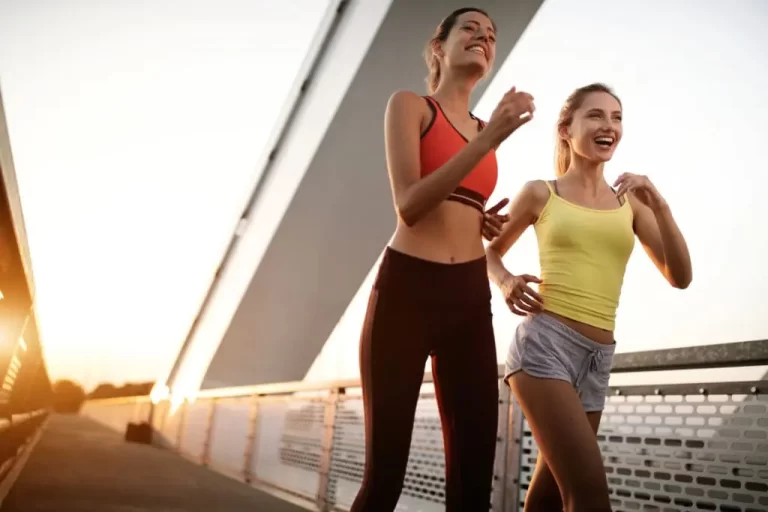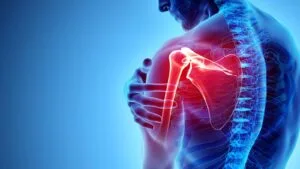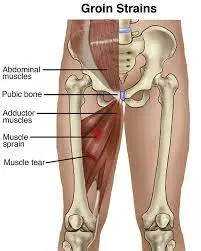Muscle Soreness in the Buttocks
What is a Muscle Soreness in the Buttocks?
Muscle soreness in the buttocks, often referred to as gluteal soreness, is a common discomfort experienced by many individuals. This condition can result from a variety of causes, including physical activity, injury, or underlying medical conditions.
The buttocks, primarily composed of the gluteal muscles, play a crucial role in various daily activities, such as walking, sitting, and standing. When these muscles become sore, it can significantly impact one’s mobility and overall well-being. In this article, we will explore the causes, symptoms, and potential treatments for muscle soreness in the buttocks, aiming to provide a comprehensive understanding of this discomfort and how to address it effectively.
The glutes, also known as the gluteal muscles, can tighten up from prolonged sitting, overuse, or overexertion during physical activity. Tight glutes can cause too many injuries, so it is important to warm them up well before exercising. It is also important to stretch your glutes after you workout.
If you sit at a desk the whole day, you should stand and walk every thirty minutes. This assists in keeping your glutes from evolving inactive, tight, and soft over time.
Introduction
Your glutes make up the biggest muscle group in your body, and you squeeze them during most of the exercises, whether you are walking, squatting, climbing stairs, or doing a full-body workout. This complex muscle group plays an essential role in stabilizing your pelvis, supporting your lower back and posture, providing power to your actions, and decreasing your risk of injury.
Tight or sore glutes and hip flexors can be a common problem for people who work out regularly and those who spend a lot of time sitting down. Knowing some of the best glute stretches can help enhance your flexibility or reduce any pains if you have delayed onset muscle soreness (DOMS) after a workout.
Done Stretching in the tight or sore glutes mainly targets three large muscles — the gluteus maximus, gluteus medius, and gluteus minimus. Many stretches also target the six less stabilizing muscles like the piriformis, a muscle that assists with hip rotation.
Glute stretches are not just for reducing tightness or improving flexibility – they are also a wonderful way to enhance your activities. Neglecting tight muscles can suggest you compromise your form, have limited flexibility, or contract the wrong muscles when you exercise, which raises your chance of injury.
If stretching is not already part of your weekly routine.
Anatomy:
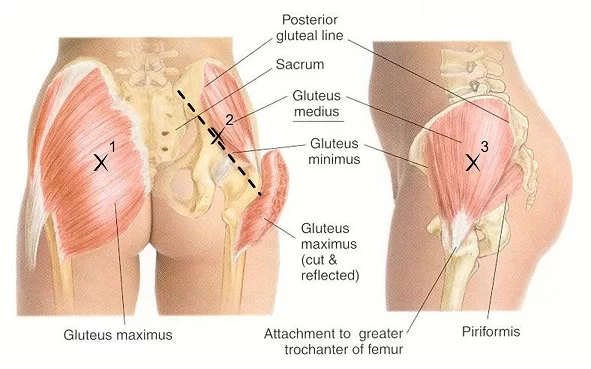
The buttocks (singular: buttock) are two round shapes of the exterior anatomy of most mammals, situated on the posterior of the pelvic region. In the human body, the buttocks are situated between the lower back and the perineum. They are made up of a layer of outer skin and underlying subcutaneous fat superimposed on the left and right gluteus maximus and gluteus medius muscles.
The 2 gluteus maximus muscles are the biggest in the human body. They are reliable for activities such as straightening the body into the upright (standing) posture when it is flexed at the waist; keeping the body in the upright posture by supporting the hip joints extended, and moving the body forward via the other leg (hip) extension when walking or running. In the sitting position, the buttocks carry the weight of the upper limb and take that weight off the feet.
Causes of Muscle Soreness in the Buttocks
- Sitting for long periods.
- Delayed muscle soreness after exercising.
- Improper posture.
- Not maintaining proper form while exercising.
- Stress on the muscles from striding, jumping, or running.
- Not doing warm-ups before exercising.
- Not doing stretching after exercising.
When to see your doctor?
If the pain has not reduced in a few days or it is getting exacerbated, see your physician. They will conduct a physical exam and possibly take imaging tests, such as X-rays, to look for the reason for the pain.
Once your physician knows what is behind your buttocks pain, they will work with you on a therapy plan fitted to your requirements.
Treatment for buttock muscle soreness:
The best therapy for sore buttocks is to pull them out by stretching techniques. You can also perform with a physical therapist to get a strengthening routine for these muscles.
If you spend prolonged time at a desk during the day, your glutes are inactive. This can induce weakness and tightness.
Stand up every 30 minutes and walk around. If you keep sitting, sit up straight and hold adequate posture. Alternately, if possible, utilize a standing desk and alternate between standing and sitting every half-hour or hour.
The reason mainly determines how to reduce glute pain.
- Rest: Reduce activities or take some time to relax when you feel glute pain. You are overusing the muscles that are already partially damaged and in demand of recovery. Continually, doing this action is all that is required to relieve
- Elevate: Raise your leg off the floor so gravity won’t affect your veins and muscles. By elevating your leg, you relieve pressure on the venous system’s pumps and valves that regulate how quickly blood returns to the heart.
- Ice and Heat: Using ice packs or heating pads, relying on the source of your pain, will be helpful.
- Over-the-counter (OTC) medications: Any muscle soreness can be temporarily reduced by over-the-counter painkillers. Ibuprofen and naproxen, both available over-the-counter (OTC) medicine, may be utilized to treat aching glutes. It is required to only take any medication, though, after speaking with your doctor about it.
- Antioxidants and protein: Protein was found to help with muscle action recovery in the 24 hours following an injury, and adding antioxidants to feeds improved recovery even more. Load up on protein-rich foods (like chicken or fish) and foods high in antioxidants (like pomegranates and kale) in the hours after an injury, and monitor your recuperation. Antioxidants and anti-inflammatory combinations are abundant in tart cherry juice. According to analysis, people who have tart cherry juice in their recovery process report less muscle pain. Cherry’s anti-inflammatory properties may help relieve muscle soreness.
- Medications: Depending on the cause of the discomfort, you may be prescribed drugs to thin the blood and decrease the pain.
- Surgery: You will require surgery if a tendon or a muscle breaks.
- Use a foam roller: Using foam rolling to reduce calf muscle pain promotes muscle healing. Foam rolling has been associated with decreased muscle edema and improved tissue repair. 25 minutes of foam rolling on a high-density foam roller after working out can help reduce stiffness in the muscles and enhance one’s dynamic motions throughout the following 24 hours.
- Massages: The massage helps to reduce glute discomfort, but the injury is still out on whether they work. Nevertheless, you can apply a foam roller to ease some muscle tension.
- Physical therapy: The most effective method for controlling glute pain is this. No matter the reason, it is a part of all therapies. Here, we describe a list of stretches and progressive strengthening workouts to help you prevent dealing with glute pain daily.
Here we describe stretching exercises for muscle soreness in the buttocks:
Glute foam roll
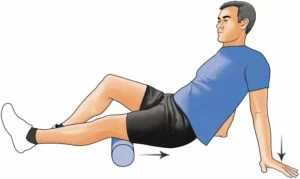
- Seat on top of a foam roller with your legs stretched in front of you.
- Bend your body to the side so that the roller is between your femur bone and sit bone.
- Gradually roll out this muscle in all directions.
- Change the direction and do it on the additional side.
- Follow with the standing figure-four stretch.
Standing figure-four stretch

- Stand with one hand on a foam roller that is placed upright.
- move one leg over your knee to make a “four” shape and seat your hips back.
- Maintain a tall upper body posture and your core squeezed.
- Repeat on the other leg after holding for 30 seconds.
Seated figure-four stretch
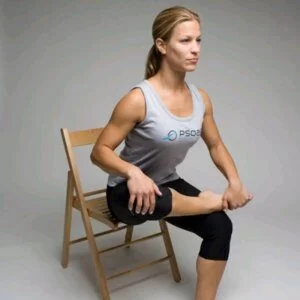
- Seat upright in a chair, keeping your spine straight.
- Scratch your right leg over your left and put your hands on your shins.
- Lean your trunk forward for a deeper stretch.
- Hold for five breaths and then put your leg on the ground.
- do this on the opposite side.
Seated twist
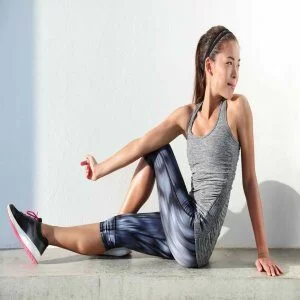
- Start by sitting down comfortably and extending your legs in front of you.
- Put your left foot on the ground and cross your right leg over your left leg while bending your right knee.
- Take a deep breath in and raise your arms upwards to lengthen your spine.
- Take a deep breath, twist to the right, and let your arms fall naturally to your flexed knee.
- Inhale and exhale normally for 5–15 breaths.
- Untwist, then repeat on the other side.
Pigeon pose
- Start on a yoga mat, hands and knees. Get your left knee to point at your left wrist’s outside.
- Place your right ankle next to your right wrist and place your shin on the ground. Try to position your left shin so that it is parallel to the front of the yoga mat.
- You should feel a stretch as you slide your right leg back. Following that, square off (even out) your hips.
- Put a folded blanket, pillow, or yoga block underneath your hips if they are elevated above the floor for support.
- As you exhale, slowly lower your chest to the ground while walking your hands forward.
- pause for five to ten breaths.
- Repeat the posture on the opposite side as you slowly exit it.
Glute bridge
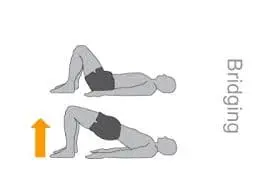
- To perform this exercise you have to lie on your back with both knees flexed.
- Put your feet hip-width apart and gently squeeze your abdominal muscles.
- Lift your hips off the floor by gently exhaling while maintaining abdominal tension.
- Don’t elevate your hips higher than what is comfortable; instead, gently contract your glute (butt muscles).
- Inhale, then slowly lower yourself back to your starting position after holding for two to three seconds.
- 8 to 10 times total.
Glute bridge with band
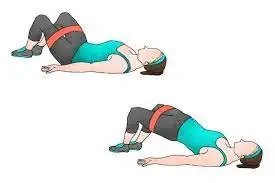
- Your calves should be wrapped in a brief, tight resistance band.
- Lift your hips while you recline on your back.
- Keep the band taut while tapping your hips on the ground and then raising them back up.
- It’s crucial to maintain a straight spine and to let your hips do the moving.
- 15–20 times, then stop.
Seated hip abduction with resistance band
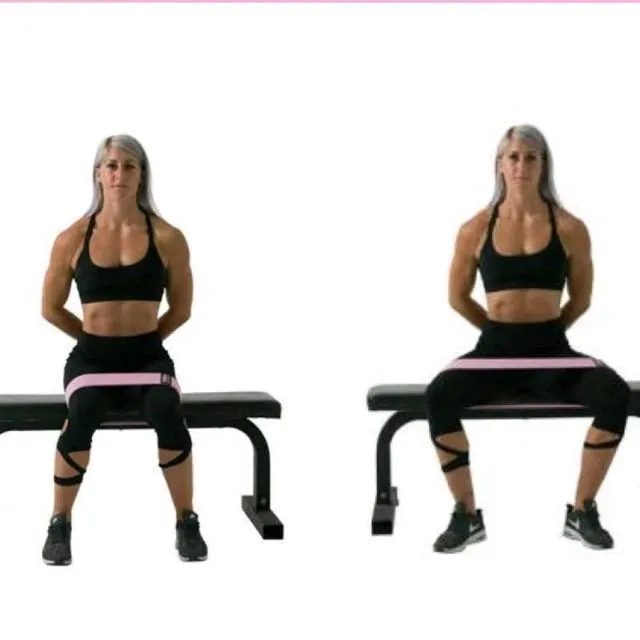
- The resistance band should be wrapped around your calves as you sit on the ground.
- Kneel while keeping your feet firmly planted on the ground.
- Put your hands a little bit behind you.
- Externally rotating the hips while maintaining a straight back and pushing your legs out to the sides.
- Bring your legs back together gradually and under control.
- Do this 12 to 15 times.
Prevention
The majority of causes of buttock discomfort are caused by physical disorders including overused muscles, unbalanced muscles, or long-term joint problems. Regular exercise can help lower the chance of injury by strengthening the muscles in your buttocks region, particularly your glutes, hamstrings, and abdominals.
Whenever starting a new exercise program or an increase in physical activity, start slowly to allow your body to adjust to the increase in physical demands, and To ensure that you are healthy enough to exercise, consult your doctor.
FAQ
What induces buttock muscle soreness?
Most typical causes of buttock pain are due to physical problems resulting from overuse, muscle inequalities, or joint issues that develop over time. Exercising daily and strengthening muscle groups around your buttocks such as your glutes, hamstrings, and abdominals can assist in reducing the risk of buttock muscle problems.
How can you get rid of buttock muscle ache?
Alternate heat and ice apply over the pain area, 15 to 20 minutes at a time, many times a day. Try to do daily stretches for your legs, hips, and buttocks. To reduce pressure, use a cushion when you are sitting. If after 2 weeks there is no progress, or if further symptoms develop, see your physician.
Why are my buttock muscles sore after training?
Our buttock muscles, usually known as a gluteal muscles are made up of 3 main muscles: gluteus maximus, medius, and minimus. Over-training, not doing warm-up before a workout, or sudden movement in an awkward way can cause these muscles to be tired and finally lead to buttock pain.
Which are the muscles found in the buttocks?
The gluteal muscles are a bunch of muscles that make up the buttock region; the muscle group consists of the gluteus maximus, gluteus medius, and gluteus minimus. The gluteus maximus is the most external and largest of the 3 muscles and creates the bulk of the shape and form of the buttock and hip area.
Is buttock ache serious?
Individuals spend a lot of time sitting down, and feeling pain in the buttocks when sitting can induce concern. Pain in this area can be quick due to a bruise or minor injury, but it can also be caused by a more serious, long-term disease.
How prolonged does buttock muscle pain last?
The buttock pain can last from days to weeks and even months, depending on the reason for the buttock pain. For illustration, in the case of sciatic pain, the pain usually begins getting better in a period of four to six weeks.
Is walking appropriate for sore glutes?
Yes, walking can be an essential part of your rehab and healing from gluteal tendinopathy, but there are some elements to consider. If you exaggerate it, it can make things worse.
Can sore glutes cause back pain?
Tight glutes can cause as much lower back discomfort as weak glutes can, so overtraining these muscles or working in occupations that require prolonged sitting can lead to tightness in the lower back area.
Do sore glutes mean growth?
No, feeling pain is not a sign of development. It simply implies that your muscles need time to relax and heal after being worked out. Keep track of your reps and weights and attempt to gradually increase them to make sure you are progressing.
Can physio help buttock pain?
Yes, physiotherapy can help you to relieve pain by using manual techniques such as soft tissue release. Ice packs can assist in lowering swelling and inflammation brought on by this illness. You can also select strengthening exercises advised by the therapist. you should concentrate on seeking the advice of a physiotherapist.
References
- Buttocks. (2023, August 9). In Wikipedia.
- Dpt, K. G. P. (2022). Causes of buttock pain and treatment options. Verywell Health.
- Chertoff, J. (2020, April 24). 8 Exercises to relieve and prevent tight glutes. Healthline.
- McNamara, M. (2019). What causes pain in the gluteus muscles after a workout? LIVESTRONG.COM.
- Sweat. (2022). 6 Best Stretches For Sore Glutes. SWEAT. https://www.sweat.com/blogs/fitness/sore-glutes

